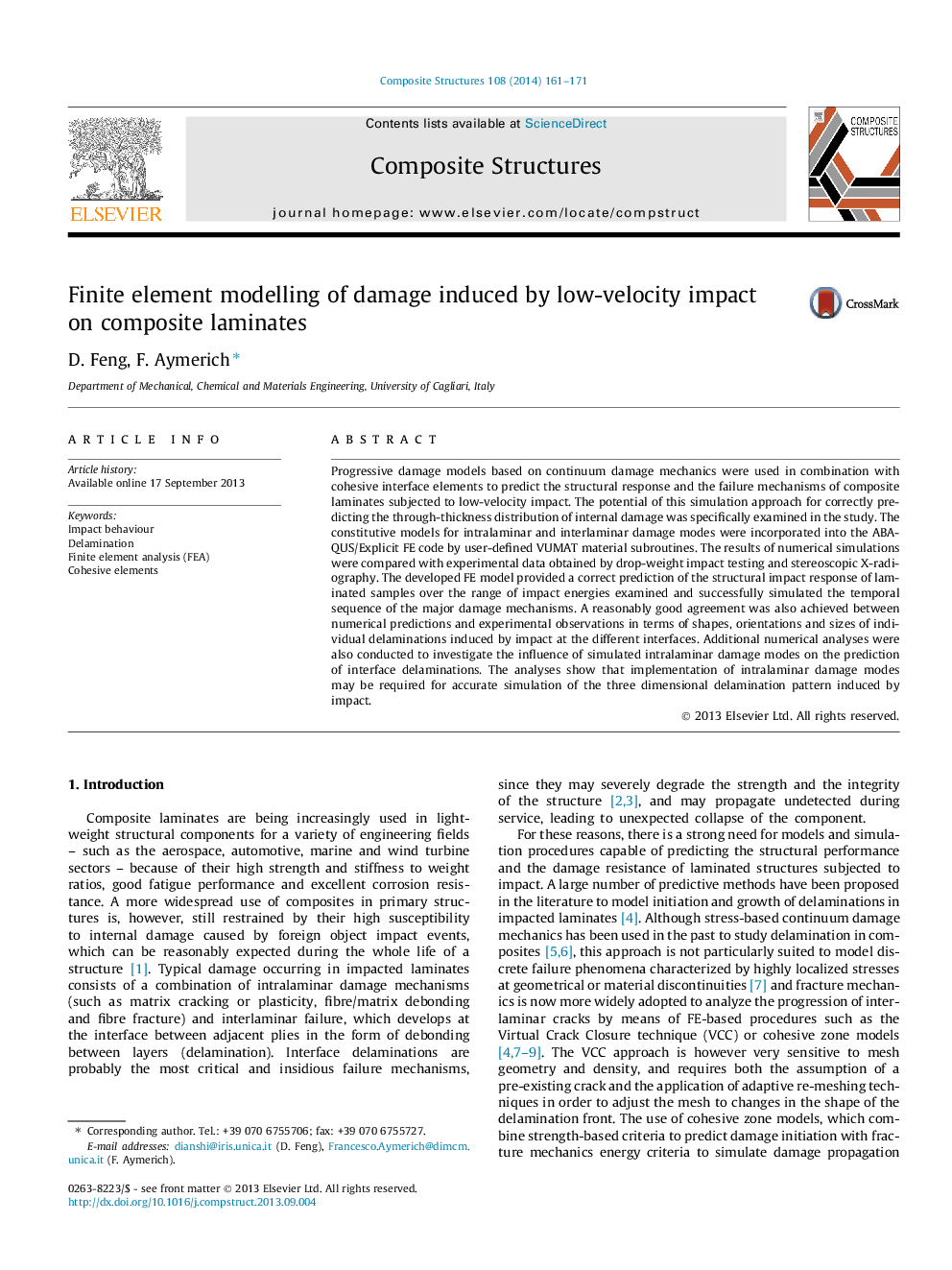| Article ID | Journal | Published Year | Pages | File Type |
|---|---|---|---|---|
| 251819 | Composite Structures | 2014 | 11 Pages |
Progressive damage models based on continuum damage mechanics were used in combination with cohesive interface elements to predict the structural response and the failure mechanisms of composite laminates subjected to low-velocity impact. The potential of this simulation approach for correctly predicting the through-thickness distribution of internal damage was specifically examined in the study. The constitutive models for intralaminar and interlaminar damage modes were incorporated into the ABAQUS/Explicit FE code by user-defined VUMAT material subroutines. The results of numerical simulations were compared with experimental data obtained by drop-weight impact testing and stereoscopic X-radiography. The developed FE model provided a correct prediction of the structural impact response of laminated samples over the range of impact energies examined and successfully simulated the temporal sequence of the major damage mechanisms. A reasonably good agreement was also achieved between numerical predictions and experimental observations in terms of shapes, orientations and sizes of individual delaminations induced by impact at the different interfaces. Additional numerical analyses were also conducted to investigate the influence of simulated intralaminar damage modes on the prediction of interface delaminations. The analyses show that implementation of intralaminar damage modes may be required for accurate simulation of the three dimensional delamination pattern induced by impact.
